The dc motor converts mechanical power into dc electrical power. One of the most important features of the dc motor is that their speed can easily be control according to the requirement by using simple methods. Such type of control is impossible in an AC motor.
The concept of speed regulation is different from the speed control. In speed regulation, the speed of the motor changes naturally whereas in dc motor the speed of the motor changes manually by the operator or by some automatic control device. The speed of DC Motor is given by the relation shown below:
Here equation (1) shows the speed is dependent upon the supply voltage V, the armature circuit resistance Ra and the field flux ϕ, which is produced by the field current.
Contents:
For controlling the speed of DC Motor, the variation in voltage, armature resistance and field flux is taken into consideration. There are three general methods of speed control of a DC Motor.
They are as follows.
-
-
- Variation of resistance in the armature circuit.
This method is called Armature Resistance or Rheostatic control. - Variation in field flux
This method is known as Field Flux Control. - Variation in applied voltage
This method is also known as Armature Voltage Control.
- Variation of resistance in the armature circuit.
-
The detailed discussion of the various method of controlling the speed is given below.
Armature Resistance Control of DC Motor
Shunt Motor
The connection diagram of a shunt motor of the armature resistance control method is shown below. In this method, a variable resistor Re is put in the armature circuit. The variation in the variable resistance does not affect the flux as the field is directly connected to the supply mains.
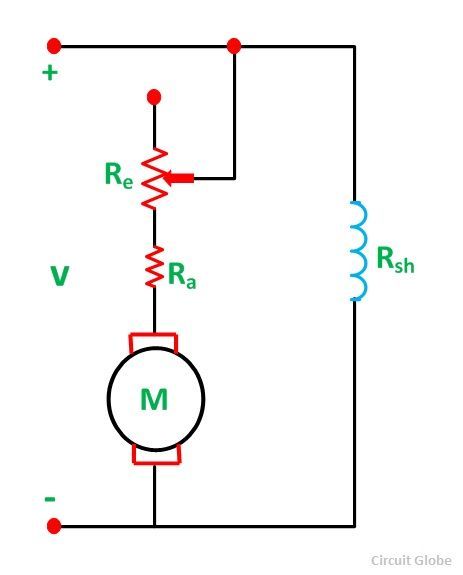 The speed current characteristic of the shunt motor is shown below.
The speed current characteristic of the shunt motor is shown below.
Now, let us consider a connection diagram of speed control of the DC Series motor by the armature resistance control method.
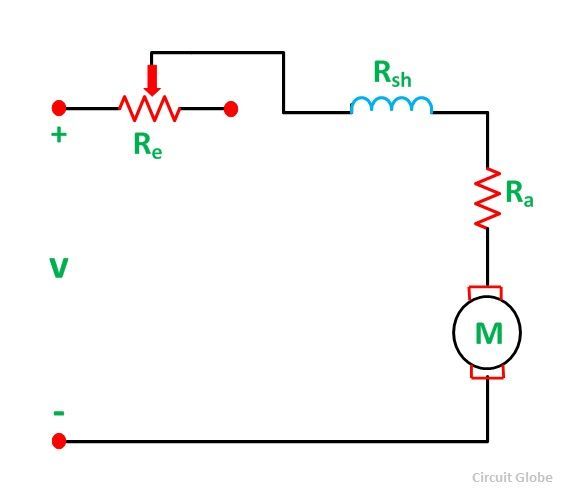 By varying the armature circuit resistance, the current and flux both are affected. The voltage drop in the variable resistance reduces the applied voltage to the armature, and as a result, the speed of the motor is reduced.
By varying the armature circuit resistance, the current and flux both are affected. The voltage drop in the variable resistance reduces the applied voltage to the armature, and as a result, the speed of the motor is reduced.
The speed–current characteristic of a series motor is shown in the figure below.
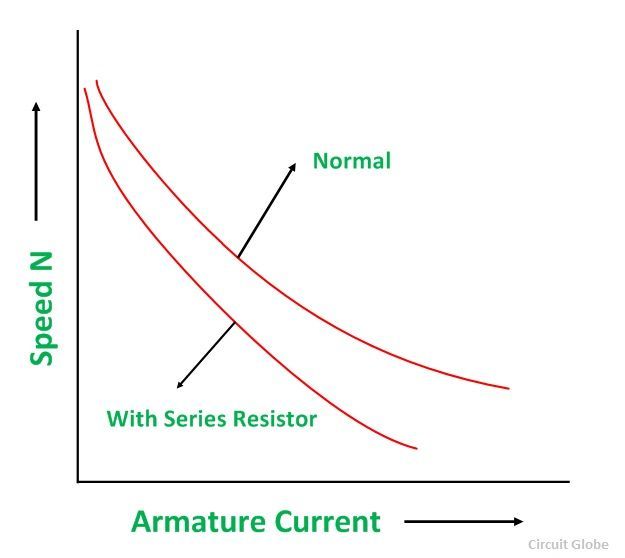 When the value of variable resistance Re is increased, the motor runs at a lower speed. Since the variable resistance carries full armature current, it must be designed to carry continuously the full armature current.
When the value of variable resistance Re is increased, the motor runs at a lower speed. Since the variable resistance carries full armature current, it must be designed to carry continuously the full armature current.
Disadvantages of Armature Resistance Control Method
-
-
- A large amount of power is wasted in the external resistance Re.
- Armature resistance control is restricted to keep the speed below the normal speed of the motor and increase in the speed above normal level is not possible by this method.
- For a given value of variable resistance, the speed reduction is not constant but varies with the motor load.
- This speed control method is used only for small motors.
-
Field Flux Control Method of DC Motor
Flux is produced by the field current. Thus, the speed control by this method is achieved by control of the field current.
Shunt Motor
In a Shunt Motor, the variable resistor RC is connected in series with the shunt field windings as shown in the figure below. This resistor RC is known as a Shunt Field Regulator.
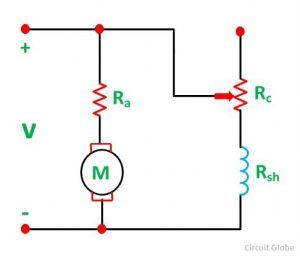 The shunt field current is given by the equation shown below:
The shunt field current is given by the equation shown below:
The connection of RC in the field reduces the field current, and hence the flux is also reduced. This reduction in flux increases the speed, and thus, the motor runs at a speed higher than the normal speed.
Therefore, this method is used to give motor speed above normal or to correct the fall of speed because of the load.
The speed-torque curve for shunt motor is shown below:
In a series motor, the variation in field current is done by anyone method, i.e. either by a diverter or by a tapped field control.
By Using a Diverter
A variable resistance Rd is connected in parallel with the series field windings as shown in the figure below:
 The parallel resistor is called a Diverter. A portion of the main current is diverted through a variable resistance Rd. Thus, the function of a diverter is to reduce the current flowing through the field winding. The reduction in field current reduces the amount of flux and as a result the speed of the motor increases.
The parallel resistor is called a Diverter. A portion of the main current is diverted through a variable resistance Rd. Thus, the function of a diverter is to reduce the current flowing through the field winding. The reduction in field current reduces the amount of flux and as a result the speed of the motor increases.
Tapped Field Control
The second method used in a series motor for the variation in field current is by tapped field control. The connection diagram is shown below:
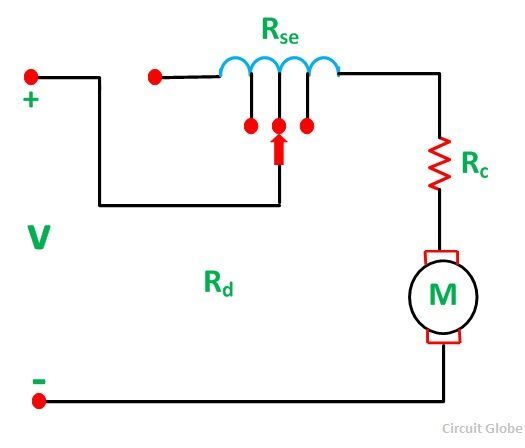 Here the ampere-turns are varied by varying the number of field turns. This type of arrangement is used in an electric traction system. The speed of the motor is controlled by the variation of the field flux.
Here the ampere-turns are varied by varying the number of field turns. This type of arrangement is used in an electric traction system. The speed of the motor is controlled by the variation of the field flux.
The speed-torque characteristic of a series motor is shown below.
Advantages of Field Flux Control
The following are the advantages of the field flux control method.
-
-
- This method is easy and convenient.
- As the shunt field is very small, the power loss in the shunt field is also small.
-
The flux cannot usually be increased beyond its normal values because of the saturation of the iron. Therefore, speed control by flux is limited to the weakening of the field, which gives an increase in speed.
This method is applicable over only to a limited range because if the field is weakened too much, there is a loss of stability.
Armature Voltage Control of DC Motor
In armature voltage control method the speed control is achieved by varying the applied voltage in the armature winding of the motor. This speed control method is also known as Ward Leonard Method, which is discussed in detail under the topic Ward Leonard Method or Armature Voltage Control. The link is provided below.
Also See: Ward Leonard Method of Speed Control of DC motor or Armature Voltage Control


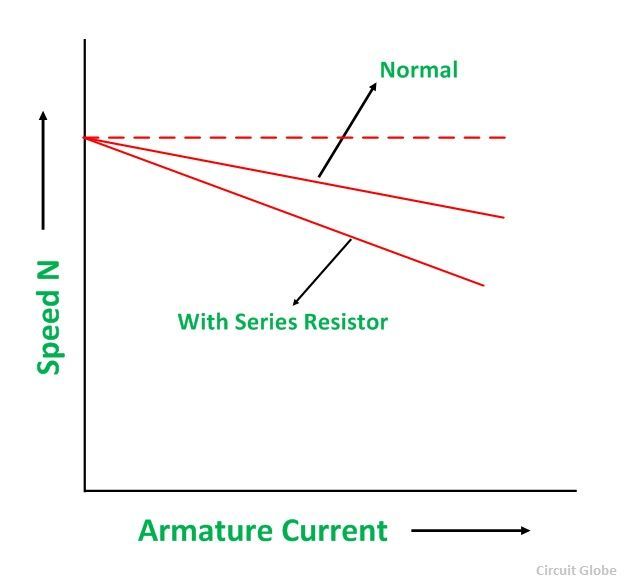

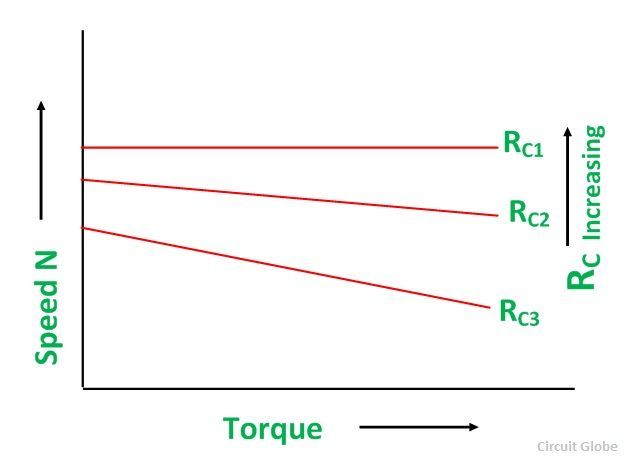
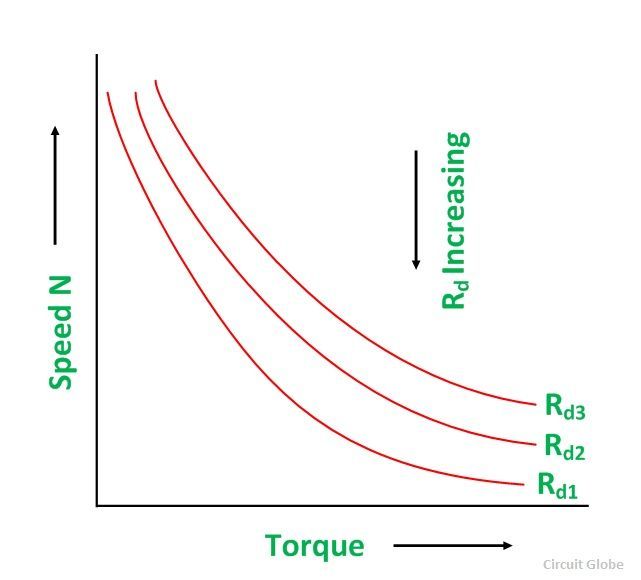
you also upload some numerical problem on each topics. At least five problem on each topics.
Also update the ‘searching tabs ‘ . It is helpful for search any topics.
There is a search box above facebook page.
there is no any search box above facebook page